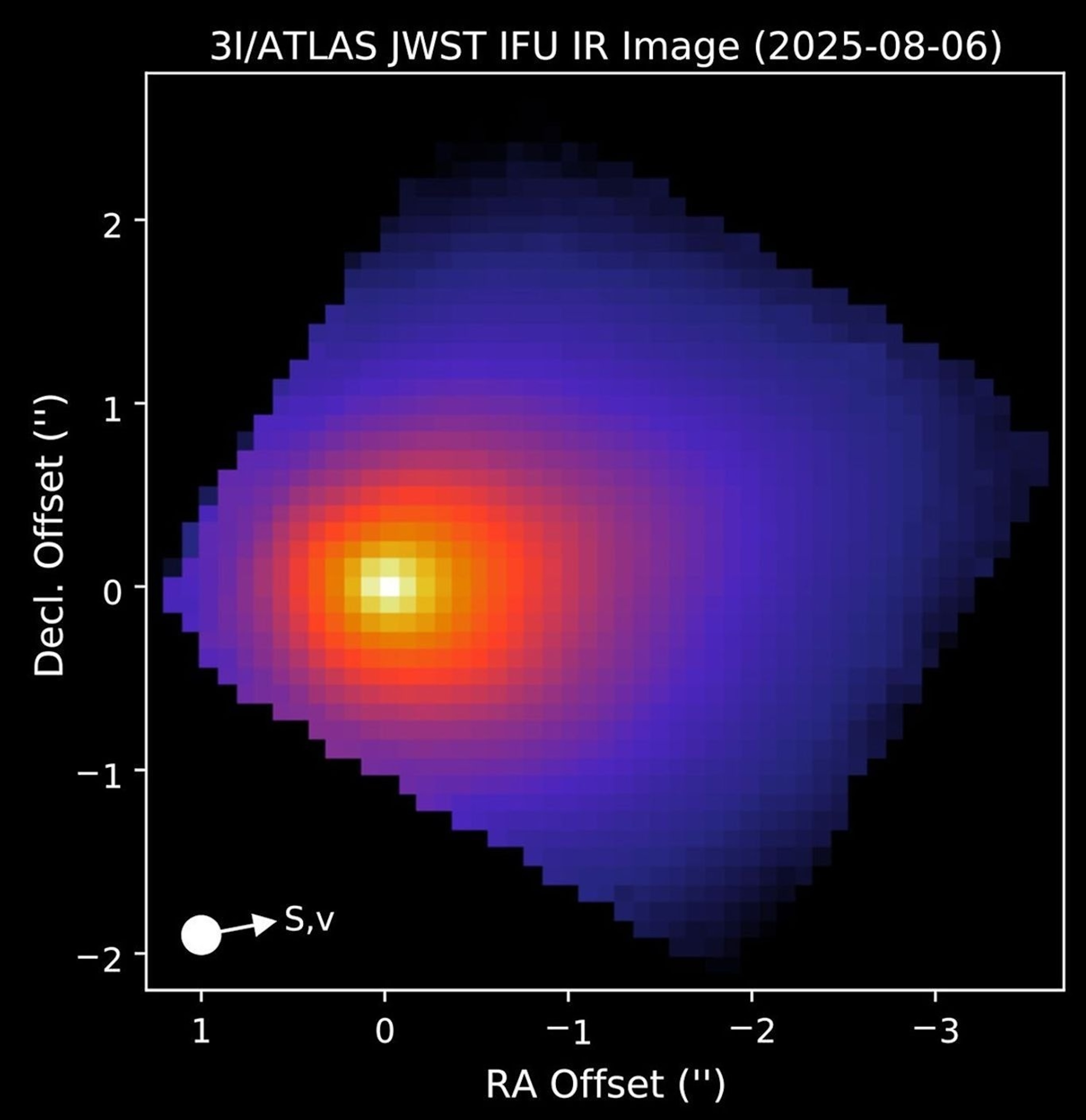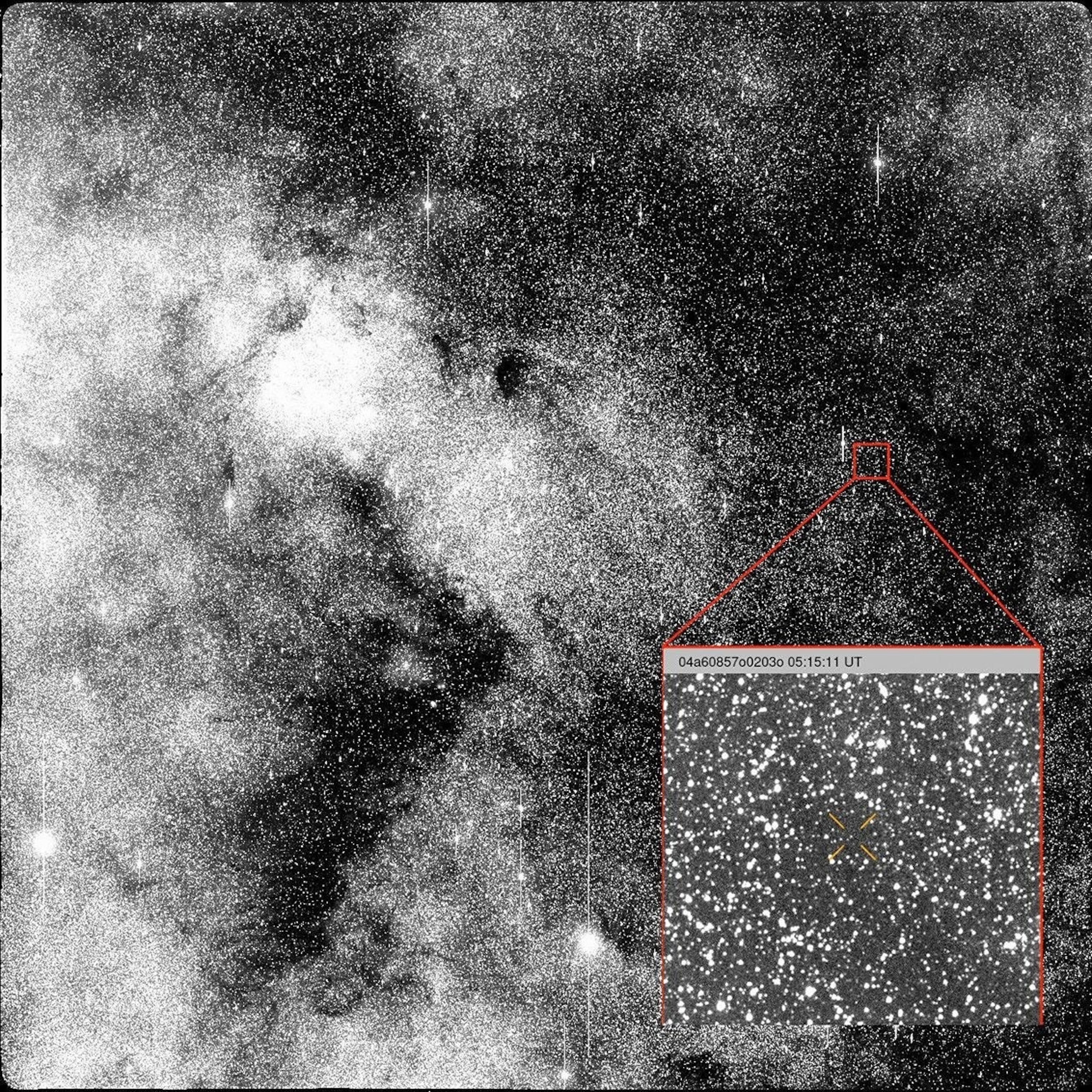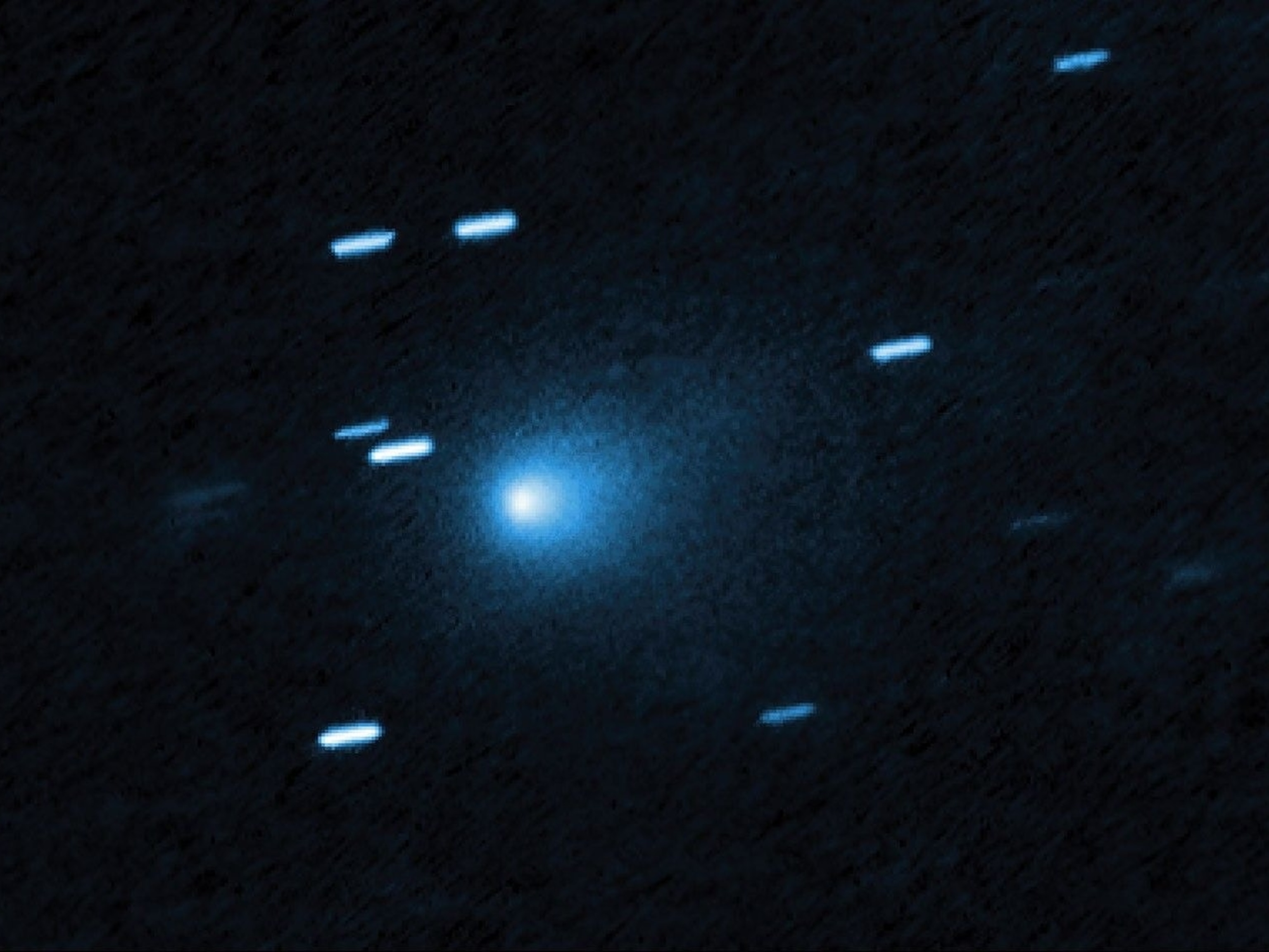The interstellar object hurtling toward the inner solar system, where Earth is located, is much larger than previously thought, astronomers say.
A comet named 3I/ATLAS likely weighs more than 33 billion tons, Harvard astrophysicist Avi Loeb said in a blog post on Thursday.
Loeb made the observation after examining the trajectory of the speeding object — comparing the total mass loss rate and outflow speed from its surface by using data taken by the Webb Space Telescope on Aug. 6.
The diameter of the nuclear of the comet is likely more than 3.1 miles, the largest of two other interstellar objects previously recorded, Loeb said.

NASA’s James Webb Space Telescope observed interstellar comet 3I/ATLAS Aug. 6, with its Near-Infrared Spectrograph instrument.
NASA
The comet is likely made mostly of carbon dioxide, with an abundance of carbon dioxide gas detected in its coma — the extended gaseous atmosphere of a comet — and water ice in its nucleus.
The comet was first detected in July through data collected by the Asteroid Terrestrial-impact Last Alert System, or ATLAS — an asteroid impact early warning system in Rio Hurtado, Chile, that is funded by NASA.
The interstellar object, which originated from interstellar space, was seen speeding through the solar system after arriving from the director of the constellation Sagittarius, according to NASA.

This image shows the observation of comet 3I/ATLAS when it was discovered on July 1, 2025. The NASA-funded ATLAS survey telescope in Chile first reported that the comet originated from interstellar space.
ATLAS/University of Hawaii/NASA
The comet poses no threat to Earth, astronomers said. However, its unusual trajectory will likely bring it close to Jupiter, Mars and Venus, Loeb said.
Earlier this month, Loeb wrote that 3I/ATLAS will come within just 1.67 million miles of Mars’ orbit on Oct. 3.
It is only the third time in history that an interstellar object entering the inner solar system has been recorded.
In 2017, cigar-shaped interstellar object called “Oumuamua,” the Hawaiian word for “scout,” was detected.

Hubble captured this image of the interstellar comet 3I/ATLAS on July 21, 2025, when the comet was 277 million miles from Earth.
NASA
An object named “21/Borisov” — a comet that likely strayed from another star system — was located in 2019.
After September, 3I/ATLAS will pass too close to the sun to remain visible, according to NASA. But it is expected to reappear on the other side of the sun in early December.
Loeb published his findings in a paper on Wednesday. It has not yet been peer reviewed.







